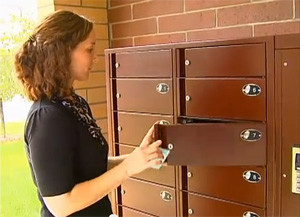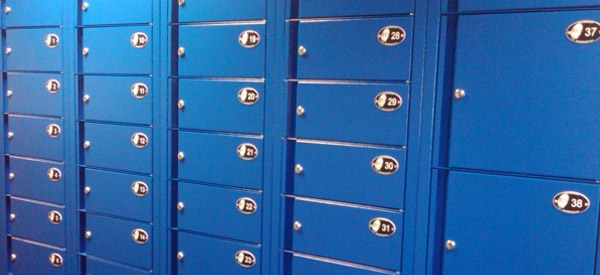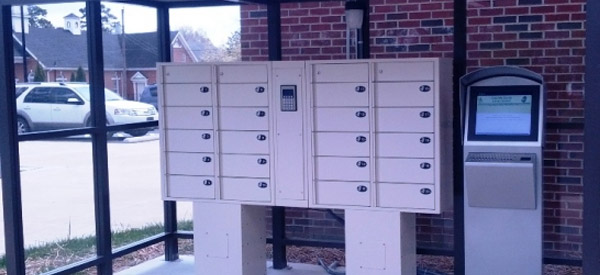As electronic services crowd out print, the costs of facilities--construction, renovation, and upkeep--are under unprecedented scrutiny. Several library systems we have worked with as consultants have considered the alternative of including kiosks in their service mix, even as growing public access to the Internet from home and office may render them irrelevant.
Early library kiosks experienced low levels of usage and did not deliver a return on investment.
Kiosks are not a new idea. An early permutation involved placing kiosks in non-library locations for remote access to the library's catalog and other resources. In the early 1990s, Miami-Dade Public Library (FL) and DeKalb County Public Library (GA) both launched kiosk-enabled service in mass transit locations. These outlets served as mini-libraries with small book collections, a few public computers, and minimal staff. While some customers made use of them, both library systems found they provided limited service returns for the cost of operations, and both closed the kiosks down after a few years. Furthermore, since both were underwritten by a state grant, disposal turned out to be lengthy and complicated business.
What does the community need more: a self-service kiosk or an enhanced library facility?
In 2008 Contra Costa County Library opened three kiosk units (two in BART train stations, and one in a shopping center) to great fanfare and high expectations. Initially, total circulation, depending on location, varied from around 500 to 1,600 checkouts annually. In FY 2011-12, those levels dropped to around 200 books at two locations and almost zero at the third. Cathy Sanford, Contra County Library Interim Director, was in charge of kiosk implementation in 2008 when she was the Assistant Director. She said she loved the concept, but, especially with the rise of e-books, the kiosk model was not cost effective. If they were to make the decision today, she told Ivy Group consultants, they would not invest in kiosks. The three kiosks they opened in 2008 were shut down in 2012.
Also opened in 2008, Yuba County Library’s single kiosk experienced even lower use levels of its single placement in a remote location. Staff experienced major issues keeping it operational. The unit was purchased from a Swedish firm that eventually sold out to another company that would not support the software. Subsequently, support was passed on to an Italian firm that failed to provide effective support. Book size was also an issue, because books had to be vended in plastic boxes which were calibrated to European standards. The kiosk was closed nearly two years ago.
New library kiosk models resemble Redbox video and game kiosk service.
The latest kiosk concepts operate as do Redboxes: they are remote free-standing, self-check-out units that can hold 400-500 books or DVDs. Some also facilitate card registration, although staff located at a bricks-and-mortar facility must retroactively verify records.
Ivy Group library consultant Catherine Alloway, Director of Schlow Public Libary, is not a fan of this service model. “I have suspected that the cost for support compared to usage would result in a high cost per circulation,” she says. Nevertheless, some libraries have expressed in interest in moving is this direction. “Not having direct experience with this kind of kiosk, the most I am willing to suggest is that any library wanting to pursue this service mode should first test a kiosk in a high traffic location or in a remote location where a facility is not feasible or warranted.”
Operational costs for kiosks are still unclear.
Referring to reports that the Toronto Public Library was budgeting $150,000 for kiosk equipment and estimating annual support costs at $15,000; we have since discovered these numbers are optimistic.
A web search turned up a 2010 staff report to the Toronto Public Library Board on the plan to locate a Library Kiosk in Toronto’s Union Station with an estimated cost for the kiosk and related collection of $200,000. Since the report was over three years old, we contacted City Librarian Jane Pyper to learn how the project was progressing. As it turns out, these figures were quite possibly inaccurate and most certainly premature. The Toronto Public Library was only now in the process of issuing an RFI (request for information) for the project, four years after the staff report.
Library kiosks that have worked: kiosks for after-hours and electronic locker systems
Gwinnett County Public Library (GA) employs one kiosk outside one of its branch libraries, giving library users after-hours access to a limited number of books and DVDs. This type of kiosk use greatly reduces the support costs, as the unit can directly interface with the library’s circulation system and can easily be accessed and restocked.
 A second kiosk-like option which may be worth considering is the electronic locker library system "Library Express’ used since 2010 by both the Washington County and Carver County Library systems in Minnesota. This service consists of electronic lockers where library users can pick up library materials they have ordered on-line or through a small adjacent kiosk. The libraries deliver the requested materials twice a week to the lockers, and customers return materials to a book drop. This system has the advantage of providing remote access to the entire collection from home, office, or the computer station next to the lockers. The Library Express program was successful, even winning a state achievement award from Associate of Minnesota Counties:
A second kiosk-like option which may be worth considering is the electronic locker library system "Library Express’ used since 2010 by both the Washington County and Carver County Library systems in Minnesota. This service consists of electronic lockers where library users can pick up library materials they have ordered on-line or through a small adjacent kiosk. The libraries deliver the requested materials twice a week to the lockers, and customers return materials to a book drop. This system has the advantage of providing remote access to the entire collection from home, office, or the computer station next to the lockers. The Library Express program was successful, even winning a state achievement award from Associate of Minnesota Counties:
“The key to our success has been placement; just as in any marketing project, we researched and evaluated where to locate these systems based on community gathering places...Our patrons love the ease of browsing for library materials on our website or at the Express Library kiosk and then we deliver to them, rather than them coming to us.”
- Patricia Conley, Washington County Library Director
The library kiosk model may be outpaced by advances in technology.
Something to point out however, is the growing availability of Wi-Fi. Patricia Conley reports that while the locker system is well used at three locations, the kiosk placed next to the lockers at the Hugo City Hall location is no longer used since people can order materials using the city hall Wi-Fi network on their smart phones or tablets.
Overall, reservations regarding library kiosks remain. Although library systems should remain open to new service options, the kiosk model seems to have been outpaced by advances in information technology. With the advent of streaming video and the proliferation of e-books, book vending machines and other remote access technologies do not appear to be as cost-effective as web-based services.
Public libraries need to offer facilities to benefit and bond the community.
We do not subscribe to the notion that printed books will disappear and that public library facilities will become vestigial tails. In fact, quite the opposite! As people connect electronically and disconnect physically, they seek other means of personal engagement. Shopping malls can offer a cautionary tale for public libraries. More and more of these malls, which for several decades served as de facto community centers, are losing customers to online shopping. In response, malls now offer not only shopping but also opportunities to gather, socialize, and connect. DeKalb County's Plaza Fiesta is an example: every day seems like a party in process for its Latino clientele. To sustain their centrality in community life, public libraries must offer even more exciting programs that bring people together. In this brave new world, printed materials will have their place, but the inventive use of facilities to accommodate a variety of leisure, educational, and informational pursuits will predominate.
All images were sourced from leidproducts.com.
Category: Libraries
Tags: libraries, technology

